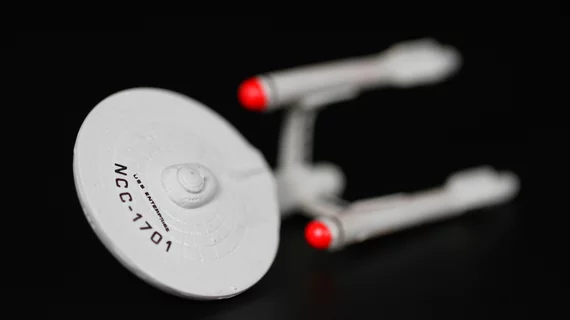As 'Star Trek' predicted, needle-free vaccines are possible, thanks to ultrasound
It seems right out of the original "Star Trek," but needle-free injections may actually be a thing—at least for inoculations.
Knowing full well that a significant proportion of children and adults alike harbor a strong fear of needles, Darcy Dunn-Lawless, a doctoral student at the University of Oxford’s Institute of Biomedical Engineering, is leading a team of researchers exploring the potential of a vaccine delivery system that utilizes ultrasound waves.
“Our method relies on an acoustic effect called ‘cavitation,’ which is the formation and popping of bubbles in response to a sound wave,” Dunn-Lawless said in the statement. “We aim to harness the concentrated bursts of mechanical energy produced by these bubble collapses in three main ways. First, to clear passages through the outer layer of dead skin cells and allow vaccine molecules to pass through. Second, to act as a pump that drives the drug molecules into these passages. Lastly, to open up the membranes surrounding the cells themselves, since some types of vaccine must get inside a cell to function.”
The technique to administer vaccines via sonogram was set to be presented at the Acoustics 2023 conference in Sydney, Australia. According to a statement, it has shown promising results in initial tests, delivering 700 times fewer vaccine molecules compared to traditional injections— yet, patients showed a higher immune response.
The researchers attribute the efficacy of the ultrasonic delivery to “immune-rich skin,” adding that the method could offer a more efficient and potentially cheaper vaccination method with few of the side effects associated with a needle jab.
“In my opinion, the main potential side effect is universal to all physical techniques in medicine: If you apply too much energy to the body, you can damage tissue,” Dunn-Lawless said. “Exposure to excessive cavitation can cause mechanical damage to cells and structures. However, there is good evidence that such damage can be avoided by limiting exposure; so a key part of my research is to try and fully identify where this safety threshold lies for vaccine delivery.”
While only tested with traditional vaccines so far, the ultrasound-based approach may be a game changer for DNA vaccines, which are traditionally challenging to administer. The researchers hope by leveraging cavitation to facilitate the penetration of therapeutic molecules through cell membranes, that could change. Additionally, not needing to keep DNA vaccines injectable-ready could improve their shelf life.
More research is needed to better understand how ultrasound delivery can be deployed in real-world clinical settings, as well as the full impact and risk of cavitation.

